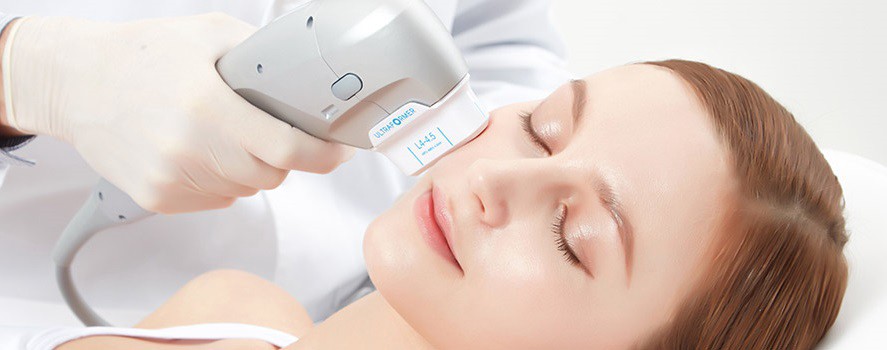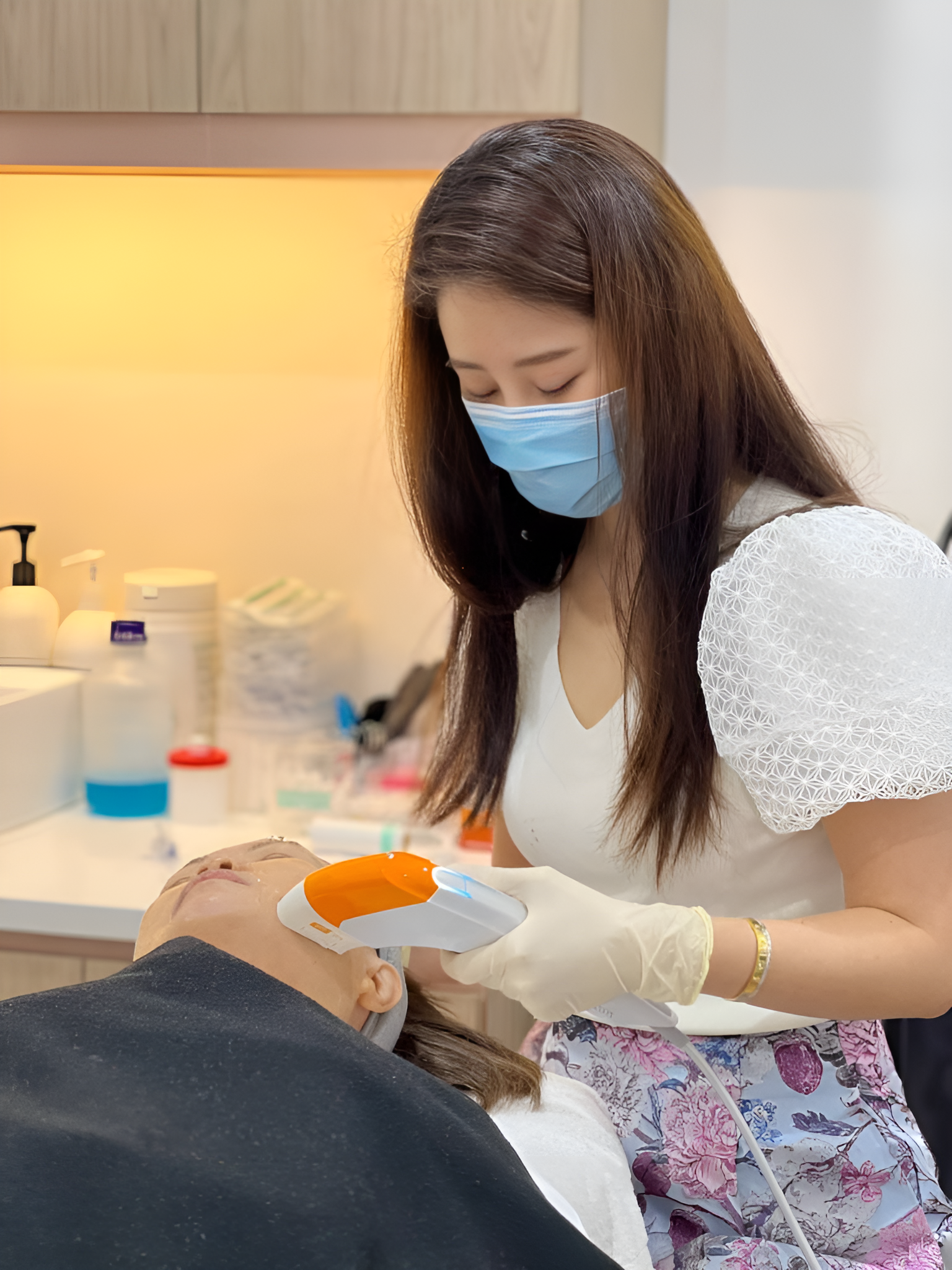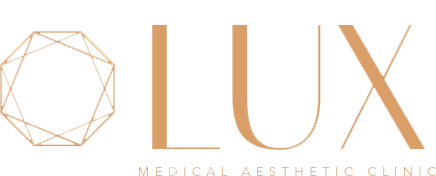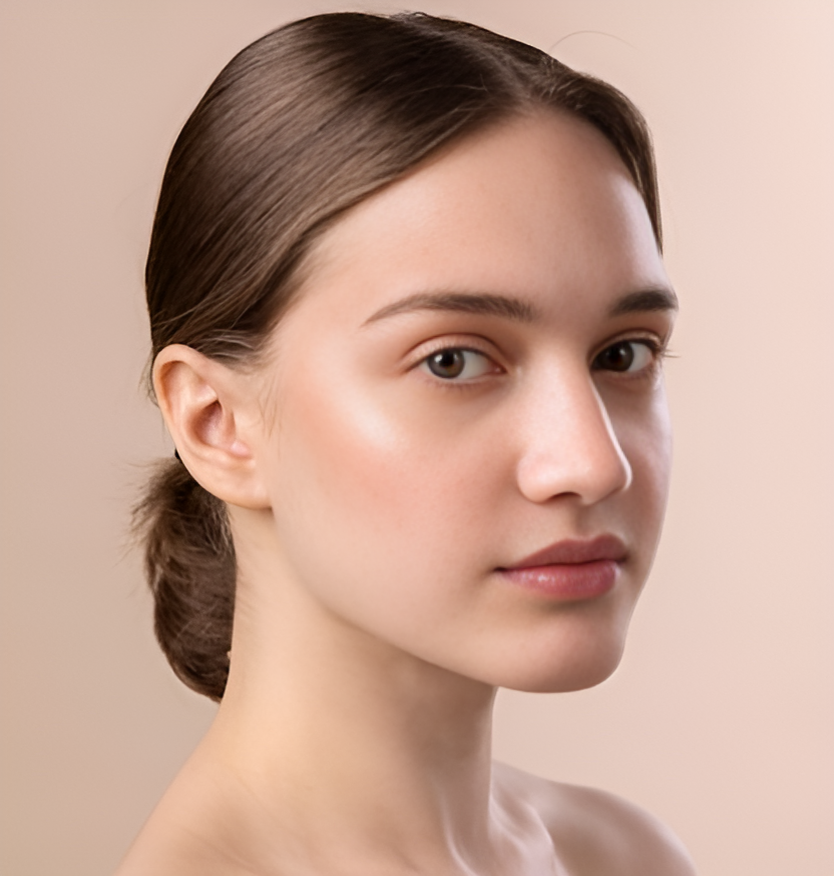High-Intensity Focused Ultrasound (HIFU) is a medically backed, non-invasive treatment that firms and lifts skin, without needles, surgery, or recovery time.
This guide cuts through the noise with a step-by-step overview to help you:
- Understand how HIFU stimulates collagen at multiple skin depths
- Learn which facial and body areas it treats effectively
- Compare HIFU to options like Thermage or Ultherapy
- Know who it’s suitable for — and when alternatives may be better
Looking for consultation details? Visit our HIFU treatment page.
What Is HIFU?
High-Intensity Focused Ultrasound (HIFU) is a non-invasive cosmetic treatment that lifts and tightens skin by using focused ultrasound energy to heat deeper layers, including the SMAS (Superficial Musculoaponeurotic System) layer. This stimulation triggers collagen production without requiring surgery, needles, or downtime, making it a recognised method for managing early skin laxity.
Originally developed for medical purposes like tumour ablation, HIFU has been adapted in aesthetic medicine to target deeper structural layers beneath the skin’s surface, bypassing the outer skin entirely. As the targeted tissues are heated, a biological repair process is activated, gradually leading to firmer, tighter, and lifted skin over time.
Want to see how it works on a cellular level?
Go to: How HIFU Works→
Wondering where HIFU can be applied?
See common treatment zones →
How Does HIFU Work?

HIFU works by delivering concentrated ultrasound energy into the dermal, subcutaneous, and SMAS layers of the skin, where the sound waves converge at specific depths to create thermal coagulation points (TCPS) with temperatures between 60°C and 70°C. This process heats targeted tissues without damaging the skin’s surface and initiates controlled micro-injury, activating the body’s natural wound-healing response. As a result, HIFU stimulates neocollagenesis (new collagen production) and promotes tissue remodelling for firmer, tighter skin.
What Happens Beneath the Skin
| Biological Process | Timing | Result |
|---|---|---|
| Collagen denaturation | Immediate | Tightens skin through fibre contraction |
| Fibroblast activation | Days to weeks | Stimulates the production of new collagen & elastin |
| Neocollagenesis + remodelling | 8–12 weeks | Improves skin firmness, structure, and lift |
Because HIFU bypasses the epidermis, healing happens invisibly, with no downtime.
Target Tissue Depths & Their Purpose
| Depth | Target Tissue | Clinical Purpose |
|---|---|---|
| 1.5 mm | Papillary/reticular dermis | Fine line reduction, skin texture refinement |
| 3.0 mm | Deep dermis | Collagen stimulation, skin tightening |
| 4.5 mm | SMAS layer | Structural lifting (same layer as facelifts) |
Note: This targeted approach is what differentiates HIFU from surface treatments. It reaches multiple layers, including foundational structures.
For more on how the device type affects this precision, see Technology in HIFU →
Why Technology Matters in HIFU Treatments
The success of a HIFU treatment depends not only on technique but also on the quality of the device used. Medical-grade HIFU systems are designed to deliver energy at specific depths with regulated pulse strength and consistent thermal concentration, directly influencing patient comfort, collagen production, and overall treatment results. Using medical-grade devices ensures that energy is accurately targeted and helps achieve targeted tightening effects while aiming for patient comfort.
Key Device Features That Impact Outcomes
| Feature | Why It Matters |
|---|---|
| Variable-depth cartridges | Treats multiple layers — from dermis to SMAS |
| Pulse control (micro/macro) | Customises treatment intensity for delicate vs dense tissue areas |
| Temperature regulation | Prevents overheating or tissue damage |
| Shot density calibration | Ensures even energy distribution and optimal coverage |
| Medical certification (CE/FDA) | Confirms device meets safety and efficacy standards |
Devices without this level of control can lead to discomfort, subpar results, or tissue injury.
Our Clinical Devices
At Lux Medical Aesthetic Clinic, we use:
- Ultraformer III and Ultraformer MPT platforms
- Micro-pulsed modes for delicate zones (e.g. periorbital region)
- Macro-focused energy for deeper layers (e.g. jawline, under-chin)
- Protocols based on skin thickness, treatment area, and response
Curious how this translates into patient experience? Jump to Treatment Journey →
HIFU Results: Effectiveness, Benefits, Side Effects & Maintenance
HIFU supports gradual facial lifting and skin tightening by activating deep collagen remodelling. Most patients may observe changes in firmness, contour, and elasticity over a 12-week period, all without injectables or recovery time.
How Effective Is HIFU?
Studies have indicated HIFU may:
- Support skin firmness and contour in treated areas
- Assist in managing early signs of jawline or brow softening
- Reduce early signs of jowling or under-chin laxity
- Strengthen the skin’s viscoelastic properties
Collagen production peaks between weeks 8–12, with results may last 12–18 months depending on age, skin density, and energy settings.
Key Benefits of HIFU
| Feature | Benefit to You |
|---|---|
| Non-invasive | No incisions, no needles, no injectables |
| Deep-layer targeting | Stimulates dermis and SMAS for lasting structural support |
| Gradual results | Lifting develops progressively over 2–3 months |
| Personalised treatment | Adjustable depths and pulse modes tailored to your skin |
| No downtime | Resume normal activities immediately after treatment |
Can HIFU Reduce Fat?
While HIFU is not intended for fat loss, macro-focused cartridges may slightly reduce localised fat deposits, such as under the chin. For larger volume reduction, it may be combined with fat-targeting treatments or fillers.
Side Effects
HIFU is considered safe when performed with medical-grade devices by trained professionals. Side effects are usually mild, temporary, and resolve without intervention. These may include slight redness, tingling, or sensitivity in treated areas.
For a full breakdown of recovery symptoms and how long they last, see What to Expect →
Maintenance & Frequency
Most patients need:
- 1 session per year to maintain results
- A follow-up at 3–6 months if skin shows moderate laxity or if multi-layer treatment is planned
Your optimal frequency depends on:
- Age and collagen profile
- Skin thickness and baseline firmness
- Lifestyle factors (sun exposure, sleep, skincare)
HIFU is a non-invasive method commonly used for skin rejuvenation, delivering subtle, cumulative lift over time. It’s especially effective for early sagging and those seeking long-term maintenance without drastic change.
How HIFU Customises Treatment Across Different Skin Zones

HIFU customises its lifting and firming effects by precisely targeting different layers of skin based on the anatomical structure of each zone. Areas such as the jawline, mid-face, and under-chin each require specific energy depths and mapping techniques to achieve natural, progressive results. By adjusting the depth, intensity, and pattern of ultrasound delivery, HIFU addresses the unique laxity, collagen density, and support needs of each treatment zone without affecting the skin’s surface.
Commonly Treated Areas and Concerns
| Target Area | Concerns Addressed |
|---|---|
| Lower Face & Jawline | Sagging jowls, soft contours, reduced jawline definition, mild double chin |
| Mid-Face | Skin heaviness, early cheek descent, nasolabial folds, marionette lines |
| Upper Face | Drooping brows, forehead lines, crow’s feet, hooded eyelids. Learn about HIFU for the eye area here. |
| Neck | Loose or crepey skin, early signs of “turkey neck” |
| Under-Chin | Submental fullness, blurred chin-neck definition. See how HIFU targets the double chin. |
| Décolletage | Fine lines, mild skin wrinkling, sun-induced textural changes |
| Body | Mild laxity in the arms, thighs, or abdomen (suitable for selected cases only). Explore body HIFU applications. |
Suitability for body areas is evaluated case by case, based on subcutaneous tissue depth and skin elasticity.
How Treatment Zones Are Customised
Each treatment area requires different energy settings. Practitioners adjust:
- Cartridge depth (1.5 mm, 3.0 mm, 4.5 mm)
- Shot density and overlap mapping
- Pulse intensity for comfort and tissue response
For example:
- Brow and eye areas often use micro-pulsed energy for safety and precision
- Jawline and submental zones may require macro-focused settings to penetrate deeper layers
For more on energy precision and device capability, see: Why Technology Matters →
HIFU can be safely applied to various facial and body zones, but only when tailored to the individual’s skin structure and goals. Treatment planning should always consider anatomical variation and collagen behaviour to ensure safe and natural-looking outcomes.
Who Is HIFU Suitable For?
HIFU is ideal for individuals with mild to moderate skin laxity who seek natural-looking facial lifting without the need for needles, threads, or downtime. The best candidates typically have good skin quality and are beginning to notice early signs of sagging, softened contours, or drooping in key facial areas. HIFU provides a non-surgical option for those looking to tighten and firm their skin before more advanced ageing changes occur.
Ideal Candidates
You’re likely a good fit for HIFU if you:
- Are aged 30 to 65
- Show early jowling, brow descent, or under-chin laxity
- Prefer non-surgical solutions over thread lifts or injectables
- Have no recent facial implants, fillers, or surgical interventions
- Are in good health, not pregnant, and have no active skin conditions
HIFU works best for “saggers” (skin laxity) rather than “sinkers” (volume loss). For hollow cheeks or general volume depletion, consider pairing HIFU with fillers or biostimulators.
When HIFU May Not Be Suitable
You may need to consider other options if you:
- Have severe sagging that may require surgery
- Have a very lean face, where tightening could worsen hollowing
- Are healing from recent injectables, threads, or implants
- Present with active skin conditions or have metal implants/pacemakers near treatment areas
Can HIFU Be Combined with Other Treatments?
Yes. HIFU is often part of a multi-treatment plan, tailored to address more complex concerns.
| Combination | Clinical Benefit |
|---|---|
| HIFU + BTX (Botulinum) | Lifts tissue while relaxing dynamic wrinkles |
| HIFU + Fillers | Restores volume alongside structural lift |
| HIFU + Skin Boosters | Enhances skin elasticity and hydration post-lifting |
| HIFU + Threads (spaced) | Adds mechanical lift with collagen remodelling over time |
Combination protocols must be planned carefully to avoid overstimulation. Always consult a doctor with experience in multimodal aesthetics.
HIFU is most effective for patients who want to intervene early, before sagging becomes advanced. A qualified practitioner will assess your facial anatomy, collagen profile, and skin response to determine if HIFU — or a combination approach — is right for you.
Not sure if you’re a candidate? You can revisit these points in the Final Considerations →
What to Expect During and After HIFU
HIFU is a non-invasive, outpatient procedure, typically lasting 30 to 90 minutes depending on the area treated. Most patients return to normal activities immediately after the session, with results continuing to improve over several weeks.
The Treatment Journey – Step by Step

1. Consultation & Planning
During your visit, your doctor will:
- Assess facial anatomy, skin thickness, and laxity
- Identify treatment zones (e.g. jawline, brow, under-chin)
- Select appropriate cartridge depths (1.5 mm, 3.0 mm, 4.5 mm) based on your collagen profile and goals
2. Treatment Session
Prep (20–30 minutes):
- Cleanse skin
- Apply a topical anaesthetic
- Apply ultrasound gel for energy transfer
Energy Delivery:
- Focused ultrasound is applied in lines to mapped areas
- Thermal coagulation points form at targeted depths, initiating collagen renewal
- The session takes between 30–90 minutes
Want to understand what happens inside the skin?
See: How HIFU Works →
Is HIFU Painful?

Most patients describe:
- A warm tingling or “zapping” sensation during each shot
- Deep pressure in dense areas like the jawline
- Mild sensitivity near bony or thin-skin zones (e.g. brow, temples)
Discomfort is typically mild and temporary. Comfort depends on:
- Energy level used
- Skin thickness and area treated
- Individual tolerance
Treatment settings can be adjusted in real time to balance results and comfort.
Post-Treatment Recovery & Aftercare
There’s no downtime. However, mild effects may occur and typically resolve on their own.
| Symptom | Expected Duration |
|---|---|
| Mild redness or warmth | Few hours |
| Puffiness or tenderness | 1–3 days |
| Tingling or tightness | Few days |
| Bruising or numbness (rare) | Up to 2 weeks |
Aftercare Tips
- Apply a hydrating moisturiser daily
- Avoid facial massage, exfoliants, or actives for 3–5 days
- Skip saunas, hot yoga, and direct heat for 48 hours
- Use broad-spectrum SPF daily
We will provide you with a full aftercare plan based on your treatment areas.
Timeline of Results
| Timeframe | What to Expect |
|---|---|
| Week 1–2 | Subtle firmness, early texture improvements |
| Week 4–8 | Visible lift and contour definition |
| Week 12+ | Peak collagen remodelling and tightening |
| Month 6–12 | Maintenance phase begins — results may taper |
Most patients require one session per year, though a second may be advised within 3–6 months for additional or layered lifting.
HIFU provides a clearly defined treatment path, with minimal interruption to daily life. Sensations are well tolerated, and results build naturally over 2–3 months.
For expected outcomes and clinical data, revisit: HIFU Treatment Results →
How Does HIFU Compare to Other Skin-Lifting Treatments?
HIFU differs from other non-invasive facial lifting treatments for its ability to target the SMAS layer, the same deep fibromuscular structure addressed in surgical facelifts without incisions or injectables. While HIFU is highly effective for tightening and contouring, other technologies may be better suited for different skin concerns, tissue depths, or treatment goals. The choice depends on individual needs and desired outcomes.
Comparison at a Glance
| Treatment | Technology | Primary Target | Best For | Downtime |
|---|---|---|---|---|
| HIFU | Focused ultrasound | SMAS, deep dermis (3–4.5 mm) | Jawline, under-chin, brow lift | None |
| Thermage | Monopolar radiofrequency | Mid to deep dermis (~1–3 mm) | Texture, fine lines, early laxity | None |
| Ultherapy | Ultrasound + imaging | SMAS with visual mapping | Precision lifting, post-surgical asymmetry | None |
| Thread Lift | Absorbable sutures | SMAS + subcutaneous tissue | Immediate lift for moderate to advanced laxity | 1–3 days |
Why Patients Choose HIFU
- Reaches the deepest layers of skin non-surgically
- Uses thermal coagulation zones to trigger long-term collagen production
- Produces gradual, natural-looking changes over 2–3 months
- No foreign materials, fillers, or sutures involved
Already seen how it works? Review the technical depth targets →
When Other Treatments May Be More Suitable
| Option | Better For… |
|---|---|
| Thermage | Thin skin, early wrinkles, surface laxity |
| Ultherapy | Precision cases, asymmetry, post-surgical treatment areas |
| Thread Lift | Moderate to severe sagging needing instant results |
| Fillers | Volume loss in cheeks, temples, or tear troughs |
Many patients benefit from a combination protocol, HIFU for lift, paired with fillers or threads for volume and definition.
Always consult a qualified doctor for a treatment plan tailored to your anatomy and goals.
HIFU is best suited for patients seeking a progressive, non-invasive lift without abrupt or artificial results. It offers a long-term collagen-building effect and complements, rather than replaces, other modalities.
Still unsure which option suits your goals? Compare HIFU vs Thermage vs Ultherapy in more depth here.
Considering HIFU in Singapore?

HIFU is a proven non-surgical option for facial lifting and tightening, ideal for those noticing early skin laxity but not yet ready for invasive procedures. It offers progressive results, minimal disruption, and long-term collagen renewal — all in a single session.
Is It Right for You?
HIFU may be suitable if you:
- Prefer gradual, natural results with no injectables or threads
- Show early signs of sagging in the brow, cheeks, jawline, or under-chin
- Want a low-maintenance treatment with results that build over 2–3 months
- Have good skin quality and are open to annual maintenance
If you’ve had recent thread lifts or fillers, or if volume loss is your main concern, another approach may be more appropriate.
Not sure? Review full criteria: Who Is HIFU Suitable For? →
What To Do Next
If you are considering non-surgical skin lifting and would like personalised advice, a consultation with a qualified doctor can help determine whether HIFU or an alternative treatment best suits your goals and skin needs.
Consultations involve a full skin assessment, treatment planning, and a discussion of realistic outcomes, with no obligation.
Schedule your HIFU consultation at Lux Medical Aesthetic Clinic





